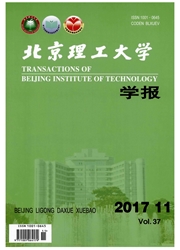

 中文摘要:
中文摘要:
对滤波器湍流模型(FBM)在超空化流动计算中的应用进行分析和评价.在CFX软件中。分别采用FBM模型和标准k-ε模型对Hydronautics翼形的超空化流动进行模拟,结合水洞实验结果从空泡形态和流场结构两方面对两种模型的计算结果作对比分析.结果表明,FBM模型对空泡形态和空泡尺度的模拟更符合实际.FBM模型可以捕捉超空化流动中较大尺度的涡团结构,并能更清晰地模拟出空化区尾部涡团交替脱落的非定常细节,同时,FBM模型对超空化流动中反向射流现象的模拟更敏感.
 英文摘要:
英文摘要:
To investigate the application of the filter-based model(FBM), the supercavitation flow around the hydronautics foil was numerically simulated using the CFX software with the FBM and the standard k-ε model, respectively. The predictive capability of the two turbulence models was evaluated with the experimental results at the aspects of the cavity shape and the flow structure. It is shown that the results of the FBM model are more accordant with the experimental data. The FBM model can capture the large scale two-phase flow structure and the detailed process of the vortex shedding in the rear part of the cavitation region. In addition, the FBM model is more sensitive to the phenomenon of reentrant jet in the supercavitation flow.
 同期刊论文项目
同期刊论文项目
 同项目期刊论文
同项目期刊论文
 期刊信息
期刊信息
